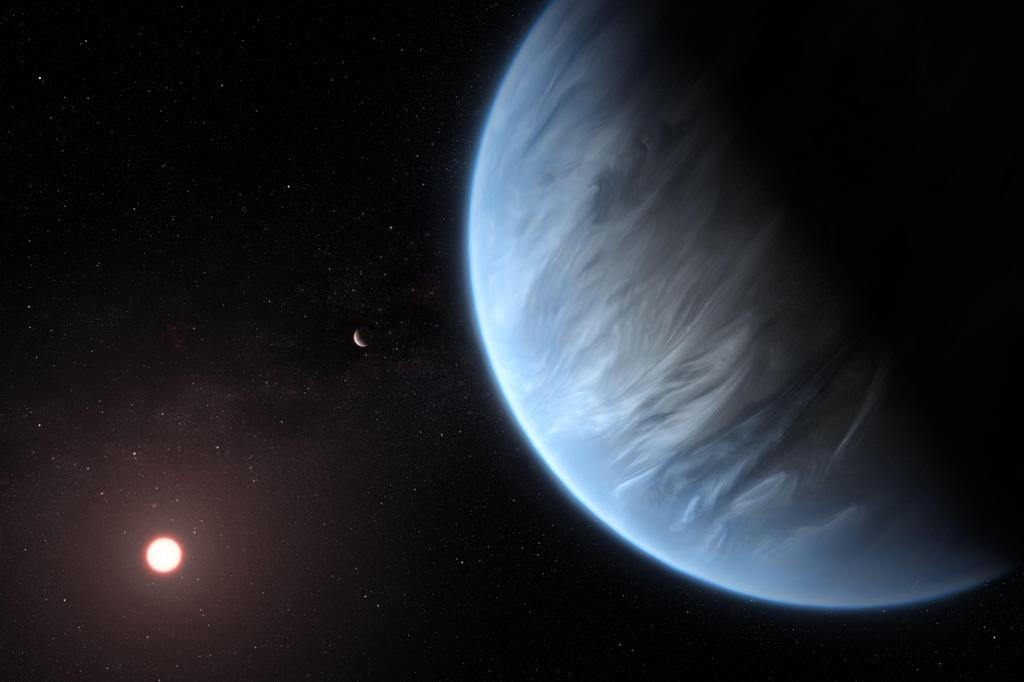K2-18b: James Webb Space Telescope Reveals New Clues About Potentially Habitable Exoplanet
The James Webb Space Telescope (JWST) has delivered groundbreaking new data on K2-18b, a super-Earth exoplanet orbiting within the habitable zone of a red dwarf star. This exciting discovery pushes the boundaries of our understanding of potentially habitable worlds beyond our solar system and reignites the search for extraterrestrial life. Initial findings suggest the presence of significant amounts of methane and potentially other biosignature gases, sparking intense interest within the scientific community.
K2-18b: A Super-Earth in the Habitable Zone
K2-18b, located approximately 120 light-years away in the constellation Leo, was initially discovered in 2015 by the Kepler space telescope. Its classification as a "super-Earth" indicates a planet significantly larger than Earth but smaller than Neptune. Crucially, it orbits within its star's habitable zone – the region where liquid water, a key ingredient for life as we know it, could potentially exist on the planet's surface.
Key Characteristics of K2-18b:
- Mass: Approximately 8 times that of Earth.
- Radius: Approximately 2.6 times that of Earth.
- Orbital Period: Approximately 33 days.
- Star Type: Red dwarf star (K2-18).
JWST's Unprecedented Observations: Methane and Beyond
The JWST's powerful infrared capabilities have allowed astronomers to analyze the atmospheric composition of K2-18b with unprecedented detail. Initial spectroscopic data reveal the presence of significant quantities of methane. While methane itself isn't definitive proof of life, its presence in conjunction with other potential biosignature gases strengthens the case for further investigation.
The Significance of Methane Detection:
- Biosignature Potential: Methane can be produced by both geological processes and biological activity. Its detection necessitates further study to determine its origin.
- Atmospheric Modeling: The presence of methane provides crucial data for developing more accurate atmospheric models of K2-18b. This allows scientists to better understand its climate and potential habitability.
- Future Research: These findings highlight the immense potential of the JWST in characterizing exoplanet atmospheres and searching for signs of life beyond Earth.
The Search for Biosignatures: A Long-Term Endeavor
While the JWST's observations are incredibly promising, it's crucial to understand that detecting methane, or even other potential biosignatures, doesn't automatically confirm the presence of life on K2-18b. Further research, including more detailed atmospheric analysis and potentially future missions, is necessary to draw definitive conclusions.
Challenges and Future Steps:
- Distinguishing Biological from Geological Sources: Scientists need to differentiate between methane produced by biological processes and geological activity.
- Detecting Other Biosignatures: The search for other potential biosignatures, such as oxygen or ozone, will be crucial in assessing the planet's habitability.
- Technological Advancements: Future advancements in telescope technology and space exploration will be vital for carrying out more in-depth studies of K2-18b and other potentially habitable exoplanets.
Conclusion: K2-18b and the Future of Exoplanet Research
The JWST's findings on K2-18b represent a significant leap forward in exoplanet research. The detection of methane highlights the potential for future discoveries and underscores the importance of continued exploration. The quest to find life beyond Earth is an ongoing scientific endeavor, and K2-18b remains a compelling target in this exciting pursuit. Stay tuned for further updates as researchers delve deeper into the mysteries of this intriguing super-Earth.
Keywords: K2-18b, James Webb Space Telescope, JWST, exoplanet, super-Earth, habitable zone, methane, biosignatures, extraterrestrial life, red dwarf star, space exploration, astronomy, astrobiology.
Related Articles: (Internal and External Links - replace with actual links)
Call to Action: What are your thoughts on this exciting discovery? Share your opinions in the comments below!
